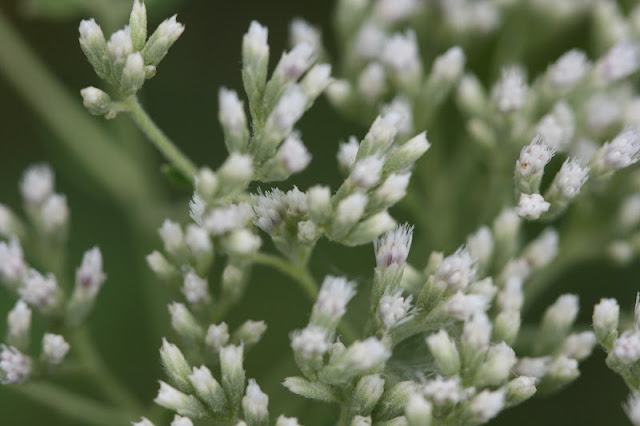Lady lupine (Lupinus villosus) is the common pink-flowered lupine of Florida. It occurs throughout the northern tiers of counties to about the latitude of Citrus County, with a slightly disjunct population reported in Polk County. It also occurs in states to our north - from Louisiana to the west and North Carolina to our northeast. This is a species found only in extremely well-drained sandy habitats, most commonly in open sandhills.
Like most of our lupines, lady lupine is a short-lived perennial. Most plants do not flower their first year, flower sparingly the second, and then reach their full potential in the third when they bloom profusely. Very few, if any, plants survive into a fourth season.
Lady lupine can be distinguished from sky-blue lupine (Lupinus diffusus) in areas where they both occur by their extremely tomentose (hairy) leaves. This characteristic is what gives it its Latin name. Both species have a pair of small leaves (correctly termed stipules) at the base of their main leaves. These stipules are not present in the extremely rare scrub lupine (L. aridorum) and Gulf coast lupine (L. westianus). The leaves of lady lupine also are normally held more erect than those of sky-blue lupine.
A mature lady lupine can attain a height of about 1 foot and a width more than twice this. Many flowering stems emerge from the center of the plant. These may stand 2 feet high. The flowers are soft pink in hue with a dark red spot on the upright petal above the lip. Flowering begins at the base of the stalk and proceeds upward. Because of this, plants remain in flower for many weeks - beginning in early spring and lasting into April.
Lupines are exceedingly beautiful wildflowers, but our Florida species (with the exception of perennial lupine, L. perennis) are nearly impossible in cultivation. Most seedlings die early in their development when kept in pots and most that survive die soon after replanting. For this reason, they have never been offered for sale by any commercial grower I am aware of in Florida. My own experiences with these species have been extremely "spotty." Plants that have survived to flower have been rare and they die after 3 years without producing new progeny through reseeding.
I understand that some success has recently been acheived by growing the seeds in grow (peat) pots and transplanting them directly to approapriate sites without disrupting their roots. If you chance upon seed and are interested in attempting this species, try this method. Just be sure that the site you choose to plant in has absolute perfect (pure sand) drainage and plenty of sun. Seedlings may also require a specific micorrhizal fungus to thrive, so planting them in areas where lupines have not previously grown may prove difficult.
From my experiences, lupines in Florida are best appreciated where they are growing in nature and admired for their unique character without coveting them for the home landscape.





































